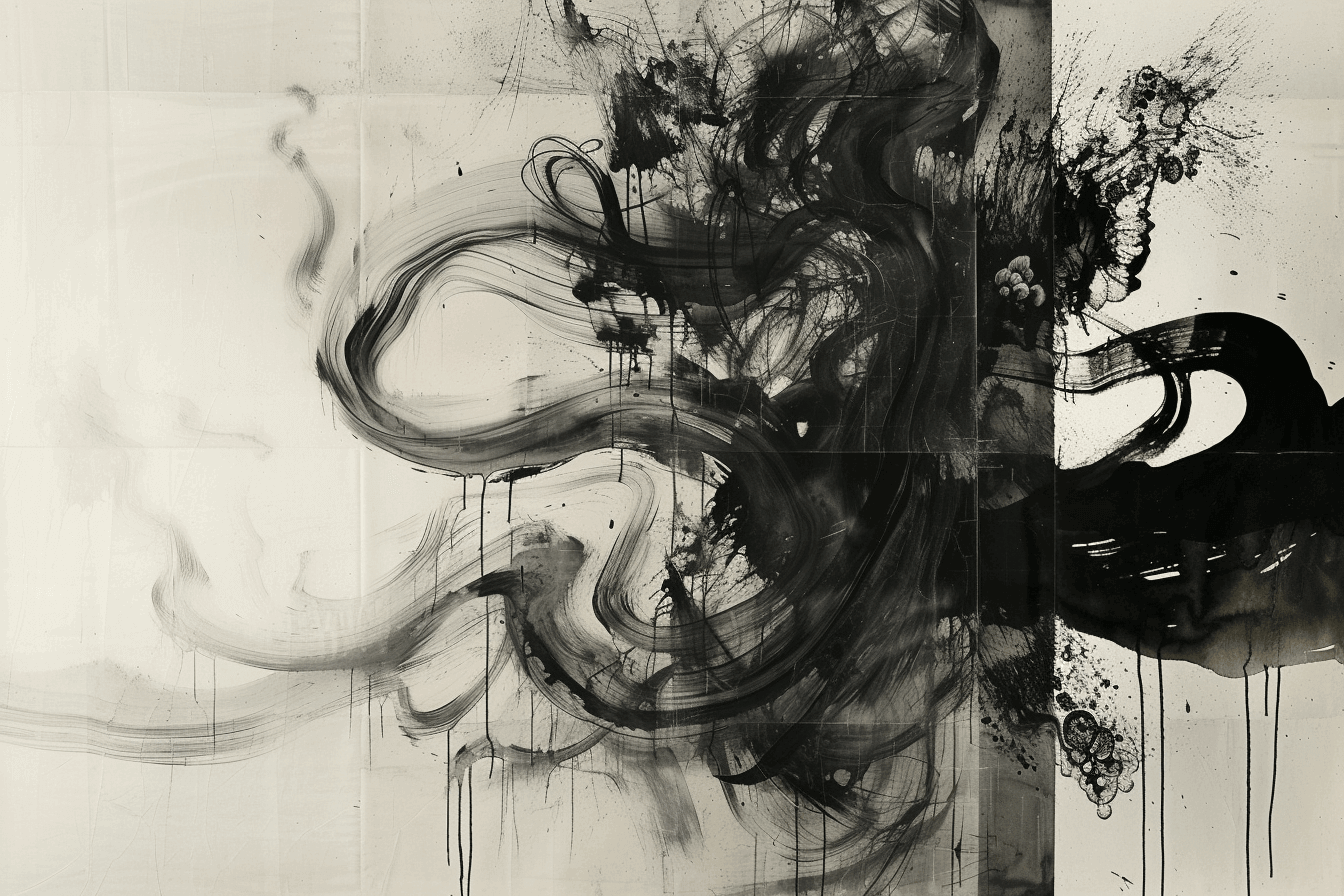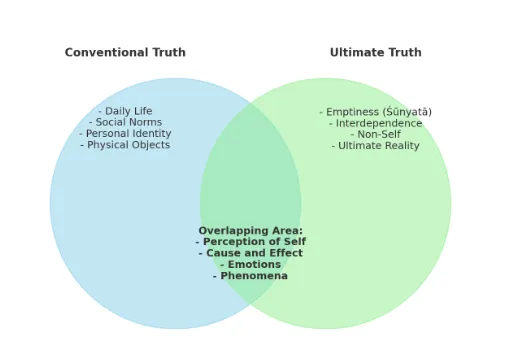
How true is Truth?
This post delves into how our perceptions of reality are shaped, challenging readers to question conventional beliefs and embrace a deeper understanding of the world around us.
Abstract art of Beings Visible and Invisible
Just a few months back, my friend’s mom found herself in a hospital bed, facing the bright hospital lights and the endless beeping of machines. In the midst of this, she experienced something extraordinary. She was convinced her late brother came for a visit. For her, this wasn’t a figment of imagination; it was as tangible as the hospital sheets—she conversed with him, felt the warmth of his presence, and drew comfort from this reunion.
The doctor described this as a clear case of hallucination, a sensory experience that appear real but is just created by the mind. When I heard that, I joked: Isn’t everything created by our minds?
This incident sparked a deep curiosity: If this experience held undeniable Truth for her, who are we to discredit it? She could swear she saw him, we could swear we didn’t. It led me down a rabbit hole of thought —our agreed-upon “truths” are often just the popular vote. But is Truth something that a show of hands can decide?
Green Room:
Let’s say you’re in a room painted blue, but nine out of ten people insist it’s green. If you’re the only one saying it’s blue, does that make you wrong? A lier? What if you give in to the others and accept it’s blue, does the room magically change color? Is the wall lying? Or are we all just seeing different things?
The Politician’s fan:
After an impromptu discussion with a group of fans/followers of a particular politician. I observed that our truths are often biased. They kept praising the Politician, and it clearly hurt their feelings whenever I said something to the contrary. I concluded that our attachment to our version of “truth” could cause us suffering aswell.
Truth, in general, is often perceived as binary—true or false, black or white. Yet, we know that Truth is complicated; it is multi-layered and many-sided, especially when viewed through personal experience, consensus reality, individual perceptions, and belief systems.
So, I dug around in Western philosophy and found the following theories about Truth.
Correspondence Theory: Truth matches reality, but defining reality can be tricky and subjective, like when my friend’s mom saw her deceased brother. Different people may perceive reality differently, making it challenging to establish a universally agreed-upon truth.
Coherence Theory: Truth fits consistently within our beliefs, but this can create echo chambers or “Isolated Truths,” such as among political enthusiasts. Its weakness lies in the possibility of creating isolated systems of belief that are internally consistent yet detached from reality. This can lead to confirmation bias, where evidence outside the belief system is ignored.
Pragmatic Theory: Truth is based on what’s practical or effective, focusing on outcomes rather than matching an objective reality, useful in personal beliefs and community norms. A significant drawback is that it equates Truth with utility, ignoring that what works in one context might not be true in another. It risks endorsing beliefs based on their outcomes rather than their factual accuracy.
Constructivist Theory: Truth is shaped by social and cultural contexts, suggesting our accepted truths are often a product of collective agreement. Its main con is the suggestion that Truth is entirely subjective and socially constructed, potentially undermining the existence of any objective truths. This can lead to relativism, where the line between factual truths and beliefs becomes blurred.
Unsatisfied with the answers, I engaged in discussions with Tibeta Geshe las (a title in Tibetan Buddhism denoting a scholar of Buddhist philosophy) in New York City. From these discussions, I noted the following.
The Nature of Truth
The understanding of Truth in Tibetan Buddhism can be explored through two main concepts: the Two Truths Doctrine and the nature of reality as seen in the teachings on emptiness (Śūnyatā).
Emptiness (Śūnyatā) Emptiness in Tibetan Buddhism doesn’t mean nothing exists, but things aren’t just as they appear. Everything is interconnected, lacking an independent essence.
Two Truths Doctrine
I encourage the readers to explore the Two Truths Doctrine, a central tenet in Tibetan Buddhism. I couldn’t grasp the entire meaning but that I learned is the following:
Conventional Truth is about everyday realities we agree on, like time and identity, which are essential for daily life but seen as superficial spiritually.
Ultimate Truth reveals everything lacks a fixed essence, showing all is interconnected and ever-changing, understood through deep reflection.
 This is a rough diagram I made for personal note taking. It may not be the truth.
This is a rough diagram I made for personal note taking. It may not be the truth.
Implications for Understanding Truth Tibetan Buddhism encourages a deep examination of the nature of reality and Truth, urging us to look beyond superficial appearances and conventional beliefs. The teachings suggest that what we often consider solid and real is, upon closer inspection, transient and dependent on other factors. This understanding fosters a more compassionate and flexible approach to life, recognizing all beings’ shared, interconnected nature.
In the context of our reflections on Truth, Tibetan Buddhism would suggest that both the personal realities experienced by individuals (like my friend’s mother in the hospital) and the collective truths held by groups (such as the political followers) are expressions of conventional Truth, shaped by a complex interplay of mental and environmental conditions. The ultimate quest in Tibetan Buddhism is to see beyond these relative truths to understand the ultimate nature of reality, free from the either/or that often leads to misunderstanding and conflict.
Here’s how these teachings can be applied to enhance understanding, compassion, and well-being in everyday experiences:
Enhancing Compassion and Empathy Understanding that all beings navigate the world based on their perceptions of conventional Truth can foster greater empathy and compassion. Recognizing that others’ truths, even when vastly different from our own, are valid experiences for them can help us respond more kindly and thoughtfully in our interactions. This perspective encourages us to approach disagreements or misunderstandings openly, seeking to understand rather than to convince or win over.
Reducing Conflict and Frustration Realizing that many conflicts arise from clinging to our version of the Truth can be liberating. Recognizing that our perspectives are just one of many possible views shaped by countless factors and conditions can help us hold our opinions more lightly. This doesn’t mean we can’t have solid beliefs, but understanding the relative nature of these beliefs can reduce the intensity of conflicts and ease interpersonal tensions.
Cultivating Inner Peace The concept of emptiness teaches that much of our suffering stems from attachment to things, people, and ideas as if they had inherent, unchanging natures. By contemplating the interdependent and impermanent nature of all phenomena, individuals can begin to loosen the grip of these attachments, leading to greater inner peace and happiness. This perspective helps cope with change and loss, fostering resilience in life’s inevitable ups and downs.
Encouraging Open-mindedness and Curiosity Tibetan Buddhism’s emphasis on the ultimate nature of reality beyond conventional understanding encourages a sense of open-mindedness and curiosity. Instead of accepting things at face value, individuals are encouraged to question, explore, and seek more profound experiences. This can be applied in learning, personal growth, and even scientific inquiry, where questioning and challenging assumptions lead to discoveries.
Improving Decision-making Understanding the two truths can aid in more nuanced and compassionate decision-making. By recognizing the conventional nature of our perceptions and beliefs, we can make decisions that are more inclusive of different perspectives and more aligned with the interconnectedness of all things. This approach can lead to decisions that are beneficial for the individual and considerate of the well-being of others and the environment.
Fostering a Sense of Connectedness This journey into the essence of Truth, guided by personal experiences and the profound teachings of Tibetan Buddhism, calls us to embark on a personal quest for enlightenment. It’s an adventure not towards a static end but along a dynamic path of discovery, with wisdom and opportunities for personal evolution.
As we delve into the complexities and subtleties of Truth, we’re invited to expand our understanding, nurture compassion and empathy, and wholeheartedly embrace the rich mosaic of human experience. It’s a call to view the world with a more open heart and mind, transforming how we perceive reality and engage with it and each other.
Please note that I am not an expert in these topics; I’m simply a curious individual sharing insights from my exploration. I aim to inspire others to question, learn, and grow alongside me on this fascinating journey.
Disclaimer: The insights and narratives shared here are purely personal contemplations and imaginings. They do not reflect the strategies, opinions, or beliefs of any entities I am associated with professionally. These musings are crafted from my individual perspective and experience.